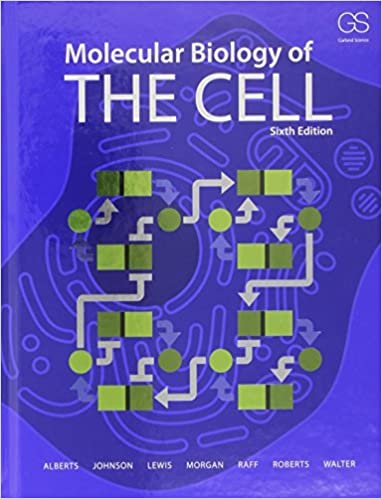
Molecular Biology Of The Cell 6th Edition by Bruce Alberts, Alexander Johnson, Julian Lewis, David Morgan, Martin Raff, Keith Roberts, Peter Walter
Edition 6ISBN: 978-0815345244
Molecular Biology Of The Cell 6th Edition by Bruce Alberts, Alexander Johnson, Julian Lewis, David Morgan, Martin Raff, Keith Roberts, Peter Walter
Edition 6ISBN: 978-0815345244 Exercise 13
Which statements are true? explain why or why not.
-Mobile pieces of DNA-transposable elements- that insert themselves into chromosomes and accumulate during evolution make up more than 40% of the human genome. Transposable elements of four types-long inter- spersed nuclear elements (LINEs), short interspersed nuclear elements (SINEs), long terminal repeat (LTR) retrotransposons, and DNA transposons-are inserted more-or-less randomly throughout the human genome. These elements are conspicuously rare at the four homeo- box gene clusters, as illus- trated for
as illus- trated for  in Figure Q4-4, along with an equivalent region of chromosome 22, which lacks a
in Figure Q4-4, along with an equivalent region of chromosome 22, which lacks a  luster. Each Hox cluster is about 100 kb in length and contains 9 to 11 genes, whose differential expression along the anteropos- terior axis of the developing embryo establishes the basic body plan for humans (and for other animals). Why do you suppose that transposable elements are so rare in the Hox clusters?
luster. Each Hox cluster is about 100 kb in length and contains 9 to 11 genes, whose differential expression along the anteropos- terior axis of the developing embryo establishes the basic body plan for humans (and for other animals). Why do you suppose that transposable elements are so rare in the Hox clusters? 
-Mobile pieces of DNA-transposable elements- that insert themselves into chromosomes and accumulate during evolution make up more than 40% of the human genome. Transposable elements of four types-long inter- spersed nuclear elements (LINEs), short interspersed nuclear elements (SINEs), long terminal repeat (LTR) retrotransposons, and DNA transposons-are inserted more-or-less randomly throughout the human genome. These elements are conspicuously rare at the four homeo- box gene clusters,
 as illus- trated for
as illus- trated for  in Figure Q4-4, along with an equivalent region of chromosome 22, which lacks a
in Figure Q4-4, along with an equivalent region of chromosome 22, which lacks a  luster. Each Hox cluster is about 100 kb in length and contains 9 to 11 genes, whose differential expression along the anteropos- terior axis of the developing embryo establishes the basic body plan for humans (and for other animals). Why do you suppose that transposable elements are so rare in the Hox clusters?
luster. Each Hox cluster is about 100 kb in length and contains 9 to 11 genes, whose differential expression along the anteropos- terior axis of the developing embryo establishes the basic body plan for humans (and for other animals). Why do you suppose that transposable elements are so rare in the Hox clusters? 
Explanation
The statement, "four core histones are s...
Molecular Biology Of The Cell 6th Edition by Bruce Alberts, Alexander Johnson, Julian Lewis, David Morgan, Martin Raff, Keith Roberts, Peter Walter
Why don’t you like this exercise?
Other Minimum 8 character and maximum 255 character
Character 255


